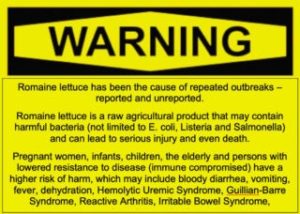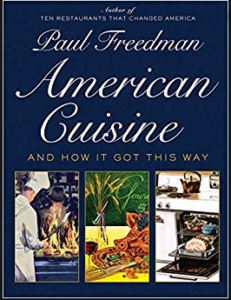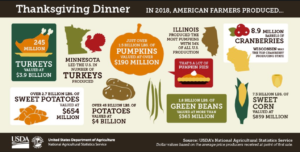Weekend reading: the latest on plant-based meat and dairy alternatives
I don’t know about you but I am having a hard time keeping up with what’s happening in the market for plant-based meat and dairy substitutes.
For one thing, they are under attack from meat producers. Here’s the latest on the politics.
Why the attack. Just take a look at what I’ve collected on this topic in the past couple of weeks. You can see at a glance why this trend is taking off. Everyone wants to get into this act in every way they can.
-
-
-
- Could yeast be a viable alternative to soy and pea protein? ‘It has all the essential amino acids, is readily available and affordable’: Israeli start-up FFW is championing yeast as a ‘major protein source’ – offering an alternative to soy and pea protein in the plant-based space, founder Leonardo Marcovitz tells FoodNavigator… Read
- Walnuts: The next big thing in plant-based meat in foodservice? Foodservice operators bored of textured soy protein for meat-free tacos, filled pasta, bruschetta and other dishes are experimenting with a new plant-based meat alternative from walnuts that “mimics the taste and texture of ground beef,” says the California Walnut Board… Read
- Disrupting the meat industry: Global Food Industries ready to launch plant-based burgers: UAE food firm Global Food Industries (GFI) has announced plans to launch its plant-based ‘not-chicken and not-beef burgers’ in November.—
- Introducing the NaSu Burger: ‘The basic idea is totally different to Impossible or Beyond’: FoodSolutionsTeam (FST) is a company built around the mission to tackle food waste through the development of natural and sustainable products. With so much interest in vegan product development, the company is bringing out the NaSu Burger – a clean label and sustainable alternative for finished product manufacturers… Read
- Foodservice an underveloped channel for plant-based cheese, says new Daiya Foods CEO: ‘Next-generation’ plant-based burgers are rapidly gaining traction in fast casual restaurants. But they don’t all come with plant-based cheese (yet), highlighting a key area of opportunity for Daiya Foods, one of the early pioneers in dairy-free, says new CEO Michael Watt… Read
- Sacha Inchi: A super seed ready for prime time? Amazon Health Products debuts Starseed brand: Sacha Inchi could be the next hot plant-based superfood, but how much is known about its nutrient content? And can the supply keep up with future demand as the ingredient takes off in popularity?.. Read
- Oatly developers ready for repeat success with patented quinoa milk: ‘We can do it again with Quiny’: The business developer behind Oatly and a team of Bolivian scientists have developed Quiny, a patent-protected and naturally sweet quinoa powder for plant-based milks, and are gearing up for a Latin American launch… Read
- Survey: A rising generation of food consumers embrace new food technologies: As new food technologies emerge, such as cell-cultured meat and new fermentation-based ingredients, younger generations such as Gen Z and millennials are more open and quicker to embrace these new advancements, according to a consumer perception survey conducted by global communications consultancy firm Ketchum… Read more
- Plant-based protein bar with less than seven ingredients targets female consumers: Japanese natural snacks subscription service company Snaq Me has launched its second-generation plant-based protein bar, CLR Bar, nationwide. Read more
- The next fake meat? Pork (Bloomberg): Impossible Foods, the maker of plant-based faux meat, is looking to expand into pork, and hopes to move into the Chinese market.
- Nestlé to develop plant-based products from microalgae: Global food giant Nestlé is partnering with ingredients firm Corbion to explore the use of microalgae in plant-based products… Read
- Chobani goes all oat with new yogurt and milk launches: After disrupting the category 12 years ago with its Greek offering, the company is now using the cereal grain to strengthen its market dominance, while adding milk and a dairy creamer.
- Disrupting the meat industry: Global Food Industries ready to launch plant-based burgers: UAE food firm Global Food Industries (GFI) has announced plans to launch its plant-based ‘not-chicken and not-beef burgers’ in November. Read more
- Introducing the NaSu Burger: ‘The basic idea is totally different to Impossible or Beyond’: FoodSolutionsTeam (FST) is a company built around the mission to tackle food waste through the development of natural and sustainable products. With so much interest in vegan product development, the company is bringing out the NaSu Burger – a clean label and sustainable alternative for finished product manufacturers… Read
- Plant-based protein bar with less than seven ingredients targets female consumers: Japanese natural snacks subscription service company Snaq Me has launched its second-generation plant-based protein bar, CLR Bar, nationwide. Read more
- BLC taps palm and shea fat to mimic ‘palate-appealing’ behaviour of meat: Bunge Loders Crocklaan is expanding into the vegetarian burger category with a range of plant-based offerings – made from shea and palm fat – to help bring texture, bite, appearance, and flavour closer to the ‘real thing’….Read more
- There’s a cadre of highly trained flavorists trying to make plant-based meats taste like meat. The Washington Posts has the intel.
-
-






